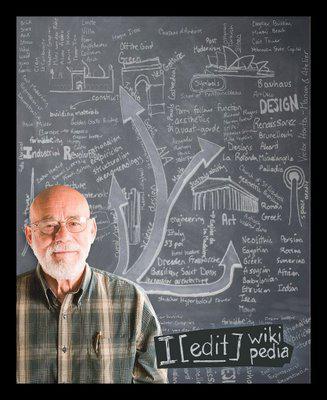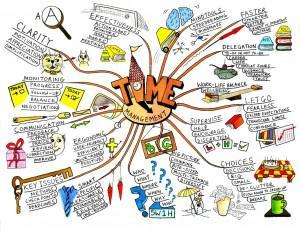
Mind mapping is probably most famously linked to Tony Buzan, who developed the concept of mapping – a tool for putting, what goes on in the brain, down on paper or on a computer screen.
It is a graphical method of representing ideas and concepts that creates ideas from the very act of mind mapping and works in opposition to ordered, linear lists, which have an effect on constricting idea and thought generation.
A Mind Map is also a great memory aid for any learning situation as the strength of the mind map lies in the simplicity of building it and the visual effect that it has on the memory, as mind mapping deals with links and categories, so is very close to the way that the brain constructs meaning.
Mind maps are therefore, unique, as the map represents our own personal learning and memory styles – although we are easily able to follow mind maps created by others – the power of a mind map is as much in the creative process of producing it as following the map at a later date in order to remember things.
An example of a mind map on time management (click to enlarge)

As with all mind maps, it starts from a central theme, topic or subject to which branches and sub-branches are added, forming connections back to the central topic.
Colours and images are encouraged as the visual impact is just, well worth more than a thousand words and help to give clarity and meaning to the process.
Each branch should not be straight and they should be the same size as the word that they represent, as Buzan says in the video, this adds visual variety too.
Adding different sizes to the text will also create a visually inviting, map that the eye will ‘want’ to follow.
Write key words or concepts without writing sentences and paragraphs as we want this to be part of a catalyst to trigger further thought and creativity.
Mind mapping is a fascinating way of bringing brainstorming to paper, whilst avoiding the creation of ‘shopping lists’ that effectively hamper, rather than encourage creativity.
Uses of Mind maps
Mind maps can be used in virtually any situation where a problem or issue needs to be tackled, including:
- Taking notes
- Preparing a presentation
- Preparing an audit
- Preparing a negotiation
- Group or Individual Brainstorming
- Planning
- Complex or simple problem-solving
- Essay writing
- Vocabulary building
- Creativity
- Action planning
There are many other ways in which Mind Mapping can be used – you are really only limited by your own creativity and your imagination.
How to Twitter Mindmap

We at Active Consultants, use Mind Maps effectively in our work with clients in training ranging from Soft Skills, Creative Thinking, Team-Building to language Learning

Tony Buzan on Mind Mapping:
© 2012, ©Active Consultants 2011. All rights reserved. Copying in part or in entirety only permitted by written consent

Original content here is published under these license terms: X
License Type:Commercial
License Summary:You may read the original content in the context in which it is published (at this web address). You may make other uses of the content only with the written permission of the author on payment of a fee.
Republished by Blog Post Promoter

